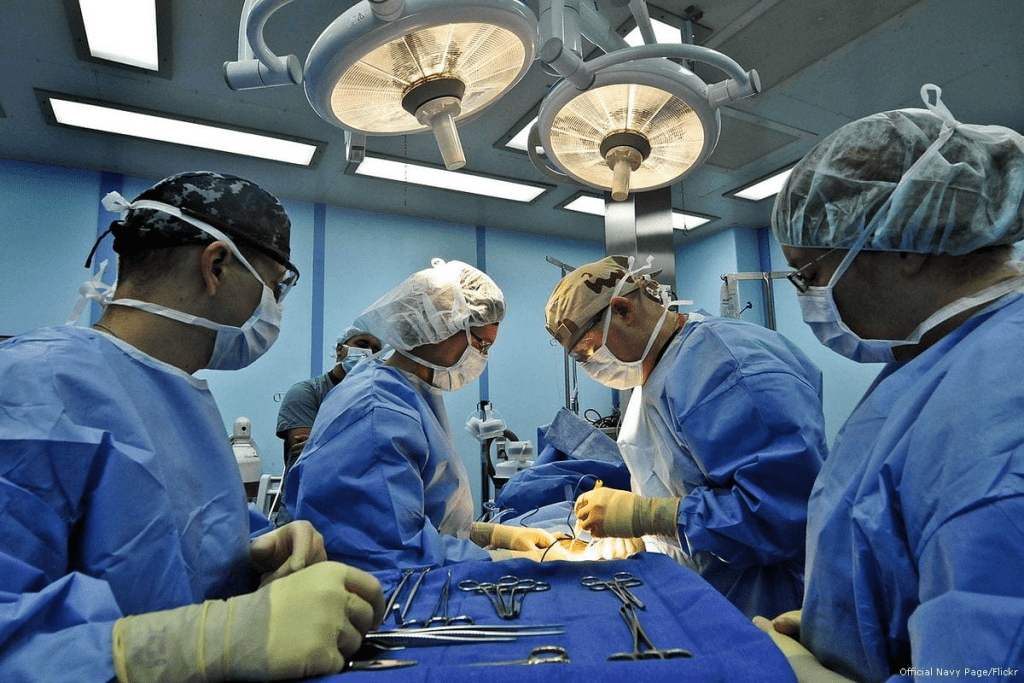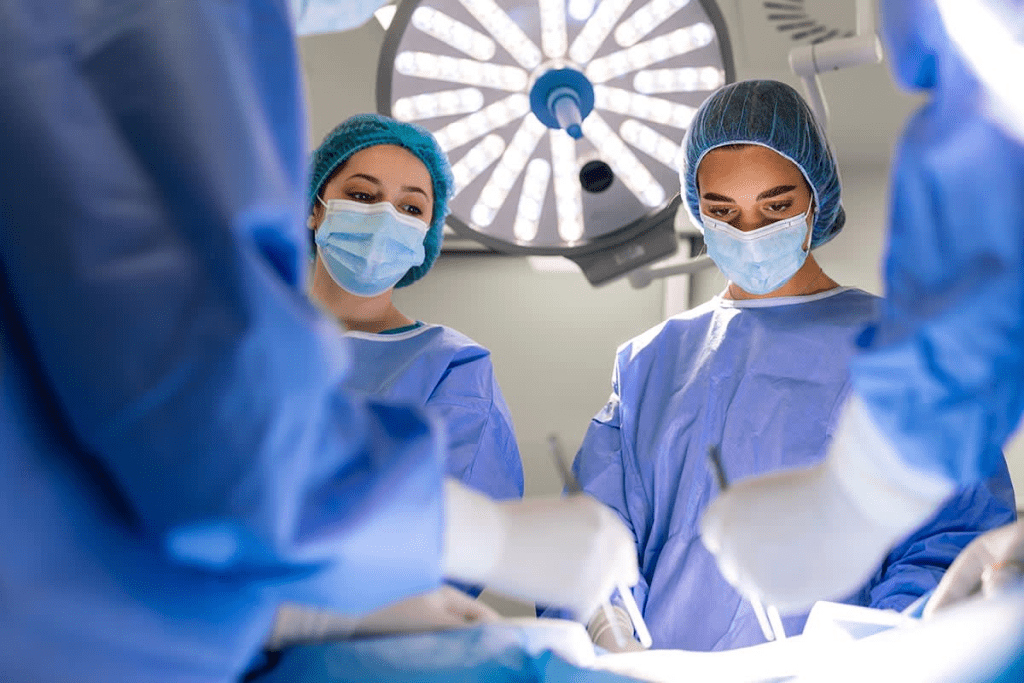Last Updated on November 14, 2025 by

Postoperative fever is a serious issue that can happen after surgery. It can affect how well a patient recovers. It’s important for doctors to know about post op fever to give the best care.
The “5 W’s” help doctors figure out and handle postoperative fever. This way, they can act fast and reduce risks. Places like LIVHospital are leading the way with new care methods to improve patient results.

Postoperative fever is a big worry in the PACU and during hospital stay. The ‘5 W’s’ – Wind, Water, Wound, Walking, and Wonder drugs – help doctors remember common fever causes after surgery.
Fever after surgery can mean many things, from small infections to serious problems. Knowing when and how high the fever is helps find the cause. For example, pneumonia often causes fever in the first few days after surgery. Urinary tract infections usually happen later, around days 3-5.
It’s very important to understand postoperative fever. Doctors need to check the patient’s surgery history, do a physical exam, and run tests. A fever over 38.5 °C needs careful checking to find the cause and treat it properly.
The ‘5 W’s framework has grown as a useful tool for doctors dealing with postoperative fever. It breaks down fever causes into five main areas, making it easier to check them one by one. Even though we don’t know exactly where the ‘5 W’s came from, it’s widely used in medicine.
Any temperature rise after surgery needs a full check-up. The time when the fever starts can tell doctors a lot about what’s causing it. Early fever might mean problems like atelectasis or pneumonia, under ‘Wind.’ Later fevers could be from infections at the surgery site (‘Wound’) or blood clots (‘Walking’).
Doctors should watch for a fever that lasts or comes with other bad signs. Quick action to find and treat the cause is key to avoiding more problems and keeping patients safe.
It’s important to know why patients get a fever after surgery. “Wind” and “Water” are big reasons. Finding out why early helps patients get better faster.
The first few days after surgery are critical. Complications can lead to fever. “Wind” and “Water” are the main culprits.
“Wind” means lung problems, a common cause of early fever. Atelectasis, or lung collapse, might be a factor. But lung issues are a big worry during this time.
Major surgeries and long anesthesia times raise respiratory risks. Issues can be mild or severe, like pneumonia. Watching lung health and acting fast can help.
“Water” means UTIs, common from the third to fifth day. Catheters used in surgery increase UTI risk. These infections cause fever and other symptoms, needing quick action.
UTI treatment includes removing catheters and sometimes antibiotics. Keeping catheters clean and using sterile methods helps prevent UTIs.
Knowing why fever happens early helps doctors help patients better. Understanding “Wind” and “Water” is key to great care.

Fever after surgery can happen at any time. It’s important to watch for surgical site infections and thromboembolic complications. These can happen even after recovery starts.
Surgical site infections (SSIs) are a big worry after five days. They can show up as redness, swelling, and discharge from the wound. Knowing the five signs of an infection after surgery is key to catching them early.
Spotting these signs early is very important. Prompt treatment of SSIs can stop more problems and help patients get better.
Thromboembolic events, like deep vein thrombosis (DVT) and pulmonary embolism (PE), can cause fever after surgery. They can happen at any time, even months later.
Things that raise the risk include being stuck in one place for too long, having cancer, or a history of blood clots. Signs might be leg pain or swelling (DVT), or shortness of breath and chest pain (PE).
Preventing these is key. Anticoagulant prophylaxis and early mobilization can help a lot. Knowing the risks and acting early can make a big difference in patient care.
Postoperative care has changed a lot with ‘Wonder Drugs’ and Enhanced Recovery After Surgery (ERAS) protocols. These new methods aim to cut down on problems and make recovery better for surgery patients.
‘Wonder Drugs’ now also means understanding fever caused by medicine. Some drugs can make patients feel feverish, making recovery harder. It’s key for doctors to know if a fever is from an infection or medicine to treat it right.
A study on surgical patients with fever found that fever from medicine is a significant issue in care after surgery. Knowing why a patient has a fever is very important for their recovery.
ERAS protocols are a new way to care for patients after surgery. They aim to lessen stress from surgery, help with recovery, and avoid problems. These plans have been shown to lower risks and shorten hospital stays, making patients happier and healthier.
ERAS includes steps like talking to patients before surgery, making sure they eat well, using the right pain and anesthesia medicines, and moving them early.
“ERAS protocols have changed postoperative care by using proven methods to help recovery.”
Recovering from big surgery can take a long time. Only 42% of patients fully recover in 4-8 weeks. Knowing these numbers helps doctors set realistic goals and plan care better.
Using ‘Wonder Drugs’ and ERAS in care after surgery is a big step forward. It helps doctors make patients’ recovery times shorter and better.
Knowing why post op fever happens is key to a smooth recovery. Fever after surgery is common and needs quick action to avoid big problems.
Identifying post op fever means understanding its many causes. These include lung issues, urinary infections, surgical site infections, and blood clots. Knowing these helps doctors use the right care plans to help patients get better.
Keeping a close eye on patients for fever and other issues is vital. Using Enhanced Recovery After Surgery (ERAS) protocols helps lower fever rates and speeds up recovery.
Combining careful monitoring with the right care plans makes surgery safer. This way, patients get the best care, lowering fever risks and improving their health.
A postoperative fever is when your body temperature goes over 101.3 °F (38.5 °C) after surgery.
The 5 W’s are Wind (pulmonary issues), Water (urinary tract infections), Wound (surgical site infections), Walking (thromboembolic issues), and Wonder Drugs (fever from medication).
Pulmonary issues, or “Wind,” usually happen in the first 2 days after surgery.
Urinary tract infections, or “Water,” usually show up between days 3-5 after surgery.
Surgical site infections, or “Wound,” are often found after the fifth day post-surgery.
ERAS protocols aim to cut down on complications and improve recovery. They also help reduce hospital stays by using proven practices before, during, and after surgery.
Yes, some medicines can cause fever, known as “Wonder Drugs.” They should be checked when looking for the cause of postoperative fever.
To avoid thromboembolic issues, or “Walking,” use anticoagulant medicines, move patients early, and follow other proven methods.
Keeping an eye on postoperative patients for fever is key. It helps catch and manage problems early, which improves their recovery.
A mild fever can last from a few days to over a week after surgery. It depends on the cause and how well the treatment works.
Subscribe to our e-newsletter to stay informed about the latest innovations in the world of health and exclusive offers!